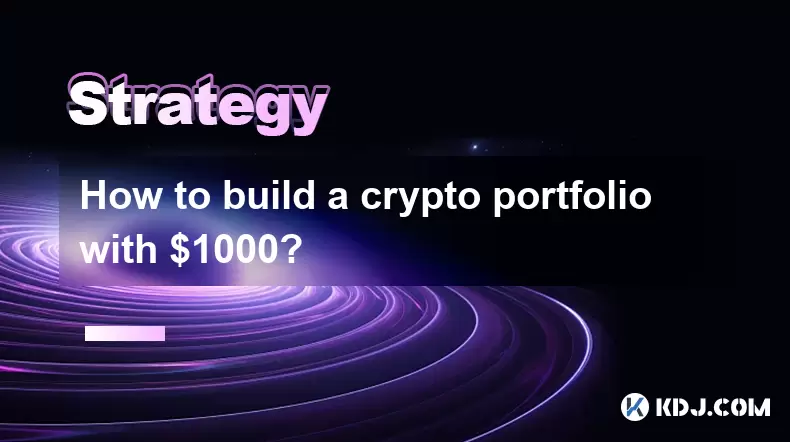-
 Bitcoin
Bitcoin $114400
1.32% -
 Ethereum
Ethereum $3499
2.20% -
 XRP
XRP $2.922
4.26% -
 Tether USDt
Tether USDt $0.0000
0.03% -
 BNB
BNB $752.6
1.53% -
 Solana
Solana $161.8
1.64% -
 USDC
USDC $0.9999
0.01% -
 TRON
TRON $0.3267
1.32% -
 Dogecoin
Dogecoin $0.1991
3.02% -
 Cardano
Cardano $0.7251
3.29% -
 Hyperliquid
Hyperliquid $38.32
3.36% -
 Stellar
Stellar $0.3972
7.58% -
 Sui
Sui $3.437
2.74% -
 Chainlink
Chainlink $16.29
3.65% -
 Bitcoin Cash
Bitcoin Cash $545.3
3.70% -
 Hedera
Hedera $0.2482
7.49% -
 Ethena USDe
Ethena USDe $1.001
0.03% -
 Avalanche
Avalanche $21.40
2.02% -
 Toncoin
Toncoin $3.579
1.56% -
 Litecoin
Litecoin $109.3
2.20% -
 UNUS SED LEO
UNUS SED LEO $8.951
-0.18% -
 Shiba Inu
Shiba Inu $0.00001220
2.75% -
 Polkadot
Polkadot $3.613
2.99% -
 Uniswap
Uniswap $9.173
3.78% -
 Monero
Monero $302.6
2.62% -
 Dai
Dai $0.0000
0.00% -
 Bitget Token
Bitget Token $4.320
1.52% -
 Pepe
Pepe $0.00001048
3.40% -
 Cronos
Cronos $0.1314
4.33% -
 Aave
Aave $259.4
3.54%
What are the important signals of LTC's K-line pattern? How to accurately identify?
LTC traders use K-line patterns like Doji, Hammer, and Engulfing to predict market reversals and enhance trading strategies based on historical price movements.
Apr 29, 2025 at 09:14 pm

Understanding LTC's K-line Patterns
K-line patterns, also known as candlestick patterns, are essential tools used by traders to analyze market trends and make informed trading decisions. When it comes to Litecoin (LTC), understanding the important signals provided by these patterns can significantly enhance your trading strategy. This article will delve into the critical K-line patterns for LTC, how to identify them accurately, and what they signify in the context of market movements.
Key K-line Patterns for LTC
There are several K-line patterns that traders frequently monitor when analyzing Litecoin's price movements. Some of the most significant patterns include the Doji, Hammer, Shooting Star, Engulfing, and Piercing Line patterns. Each of these patterns provides unique insights into potential market reversals or continuations.
Doji Pattern
The Doji pattern is characterized by a candle where the opening and closing prices are virtually the same, resulting in a very small body. This pattern indicates market indecision and can signal a potential reversal, especially when it appears after a strong uptrend or downtrend.
- Identifying a Doji: Look for a candle with a very small body and long wicks on both ends. The body should be almost non-existent, indicating that the opening and closing prices are very close.
- Significance: A Doji after an uptrend may suggest that buyers are losing control, and a downtrend might follow. Conversely, a Doji after a downtrend could indicate that sellers are losing momentum, potentially leading to an uptrend.
Hammer and Hanging Man Patterns
The Hammer and Hanging Man patterns are similar in appearance but occur in different market contexts. A Hammer appears during a downtrend and signals a potential bullish reversal, while a Hanging Man appears during an uptrend and suggests a bearish reversal.
- Identifying a Hammer: Look for a candle with a small body at the top and a long lower wick, at least twice the length of the body. The upper wick should be minimal or non-existent.
- Identifying a Hanging Man: The appearance is the same as a Hammer, but it occurs after an uptrend.
- Significance: A Hammer indicates that sellers pushed the price down, but buyers regained control by the close, suggesting a potential reversal. A Hanging Man, on the other hand, shows that buyers pushed the price up, but sellers regained control by the close, hinting at a possible reversal.
Shooting Star and Inverted Hammer Patterns
The Shooting Star and Inverted Hammer patterns are the opposite of the Hammer and Hanging Man. A Shooting Star appears during an uptrend and signals a potential bearish reversal, while an Inverted Hammer appears during a downtrend and suggests a bullish reversal.
- Identifying a Shooting Star: Look for a candle with a small body at the bottom and a long upper wick, at least twice the length of the body. The lower wick should be minimal or non-existent.
- Identifying an Inverted Hammer: The appearance is the same as a Shooting Star, but it occurs after a downtrend.
- Significance: A Shooting Star indicates that buyers pushed the price up, but sellers regained control by the close, suggesting a potential reversal. An Inverted Hammer shows that sellers pushed the price down, but buyers regained control by the close, hinting at a possible reversal.
Engulfing Patterns
The Engulfing pattern consists of two candles, where the body of the second candle completely engulfs the body of the first candle. There are two types: Bullish Engulfing and Bearish Engulfing.
- Identifying a Bullish Engulfing: Look for a downtrend followed by a small bearish candle and then a larger bullish candle that completely engulfs the previous bearish candle.
- Identifying a Bearish Engulfing: Look for an uptrend followed by a small bullish candle and then a larger bearish candle that completely engulfs the previous bullish candle.
- Significance: A Bullish Engulfing pattern suggests that buyers have taken control after a period of selling, indicating a potential reversal to the upside. A Bearish Engulfing pattern indicates that sellers have taken control after a period of buying, suggesting a potential reversal to the downside.
Piercing Line and Dark Cloud Cover Patterns
The Piercing Line and Dark Cloud Cover patterns are two-candle patterns that signal potential reversals. A Piercing Line appears during a downtrend and suggests a bullish reversal, while a Dark Cloud Cover appears during an uptrend and indicates a bearish reversal.
- Identifying a Piercing Line: Look for a downtrend followed by a bearish candle and then a bullish candle that opens below the previous close but closes above the midpoint of the previous bearish candle.
- Identifying a Dark Cloud Cover: Look for an uptrend followed by a bullish candle and then a bearish candle that opens above the previous close but closes below the midpoint of the previous bullish candle.
- Significance: A Piercing Line suggests that buyers have regained control after a period of selling, indicating a potential reversal to the upside. A Dark Cloud Cover indicates that sellers have regained control after a period of buying, suggesting a potential reversal to the downside.
Accurate Identification of K-line Patterns
Accurately identifying K-line patterns requires a keen eye and a thorough understanding of the market context. Here are some tips to help you identify these patterns more accurately:
- Context is Key: Always consider the broader market trend when identifying K-line patterns. A pattern that appears in isolation may not be as significant as one that appears at the end of a strong trend.
- Confirmation is Crucial: Look for confirmation from other technical indicators, such as moving averages, RSI, or volume, to validate the signals provided by K-line patterns.
- Timeframe Matters: Different timeframes can provide different insights. Patterns that appear on shorter timeframes may be less reliable than those on longer timeframes.
- Practice Makes Perfect: Regularly practice identifying K-line patterns on historical charts to improve your skills and gain a better understanding of their significance.
Frequently Asked Questions
Q: Can K-line patterns be used in conjunction with other technical indicators?
A: Yes, K-line patterns can be effectively used in conjunction with other technical indicators to enhance trading decisions. For example, combining K-line patterns with moving averages can help confirm trend reversals, while using RSI can provide insights into overbought or oversold conditions.
Q: How reliable are K-line patterns for predicting LTC price movements?
A: The reliability of K-line patterns for predicting LTC price movements can vary. While these patterns can provide valuable insights, they are not foolproof and should be used in conjunction with other analysis methods. The effectiveness of K-line patterns also depends on the trader's experience and the specific market conditions.
Q: Are there any specific timeframes that are more suitable for identifying K-line patterns in LTC trading?
A: Different traders may prefer different timeframes based on their trading style. For short-term traders, shorter timeframes like 15-minute or 1-hour charts may be more suitable. For long-term traders, daily or weekly charts might be more appropriate. The key is to find a timeframe that aligns with your trading strategy and goals.
Q: How can I improve my skills in identifying K-line patterns for LTC?
A: Improving your skills in identifying K-line patterns requires practice and continuous learning. Start by analyzing historical charts to identify patterns and their outcomes. Use demo accounts to practice trading based on these patterns without risking real money. Additionally, staying updated with market news and trends can help you better understand the context in which these patterns occur.
Disclaimer:info@kdj.com
The information provided is not trading advice. kdj.com does not assume any responsibility for any investments made based on the information provided in this article. Cryptocurrencies are highly volatile and it is highly recommended that you invest with caution after thorough research!
If you believe that the content used on this website infringes your copyright, please contact us immediately (info@kdj.com) and we will delete it promptly.
- Cold Wallet vs. MetaMask: A Web3 Wallet Revolution?
- 2025-08-04 06:30:12
- Chainlink Price Prediction: Bearish Continuation or a Bullish Reversal?
- 2025-08-04 06:35:12
- Bitcoin Whale Alert: Navigating Liquidation Risks in a Volatile Market
- 2025-08-04 07:10:12
- BNB Price Under Pressure: Navigating the Bearish Trend and Market Sentiment
- 2025-08-04 07:15:12
- Bitcoin Price Wobbles: Options Analysis Points to Bullish Undercurrent Despite Dip
- 2025-08-04 04:30:12
- Ark Invest, Coinbase, and Bitcoin: Decoding the Crypto Investment Landscape in NYC
- 2025-08-04 04:30:12
Related knowledge

How to avoid common crypto investment mistakes?
Jul 13,2025 at 01:35am
Understanding the Risks of Crypto InvestmentInvesting in cryptocurrency can be highly rewarding, but it also comes with significant risks. One of the ...

What is a long-short crypto strategy?
Jul 15,2025 at 10:56am
Understanding the Basics of a Long-Short Crypto StrategyA long-short crypto strategy is an investment approach where traders simultaneously take long ...

What is a long-short crypto strategy?
Jul 11,2025 at 01:28pm
Understanding the Basics of Long-Short Crypto StrategyA long-short crypto strategy is an investment approach where traders take both long and short po...

How to use the RSI indicator for crypto?
Jul 12,2025 at 03:56pm
Understanding the RSI Indicator in Cryptocurrency TradingThe Relative Strength Index (RSI) is a momentum oscillator used to measure the speed and chan...

Is copy trading a good strategy for crypto beginners?
Jul 12,2025 at 08:28am
Understanding Copy Trading in the Cryptocurrency MarketCopy trading is a strategy where novice traders replicate the trades of experienced investors a...

How to build a crypto portfolio with $1000?
Jul 13,2025 at 08:14pm
Understanding the Basics of Cryptocurrency InvestmentBuilding a crypto portfolio with $1000 starts with understanding the fundamentals of cryptocurren...

How to avoid common crypto investment mistakes?
Jul 13,2025 at 01:35am
Understanding the Risks of Crypto InvestmentInvesting in cryptocurrency can be highly rewarding, but it also comes with significant risks. One of the ...

What is a long-short crypto strategy?
Jul 15,2025 at 10:56am
Understanding the Basics of a Long-Short Crypto StrategyA long-short crypto strategy is an investment approach where traders simultaneously take long ...

What is a long-short crypto strategy?
Jul 11,2025 at 01:28pm
Understanding the Basics of Long-Short Crypto StrategyA long-short crypto strategy is an investment approach where traders take both long and short po...

How to use the RSI indicator for crypto?
Jul 12,2025 at 03:56pm
Understanding the RSI Indicator in Cryptocurrency TradingThe Relative Strength Index (RSI) is a momentum oscillator used to measure the speed and chan...

Is copy trading a good strategy for crypto beginners?
Jul 12,2025 at 08:28am
Understanding Copy Trading in the Cryptocurrency MarketCopy trading is a strategy where novice traders replicate the trades of experienced investors a...

How to build a crypto portfolio with $1000?
Jul 13,2025 at 08:14pm
Understanding the Basics of Cryptocurrency InvestmentBuilding a crypto portfolio with $1000 starts with understanding the fundamentals of cryptocurren...
See all articles

























































































